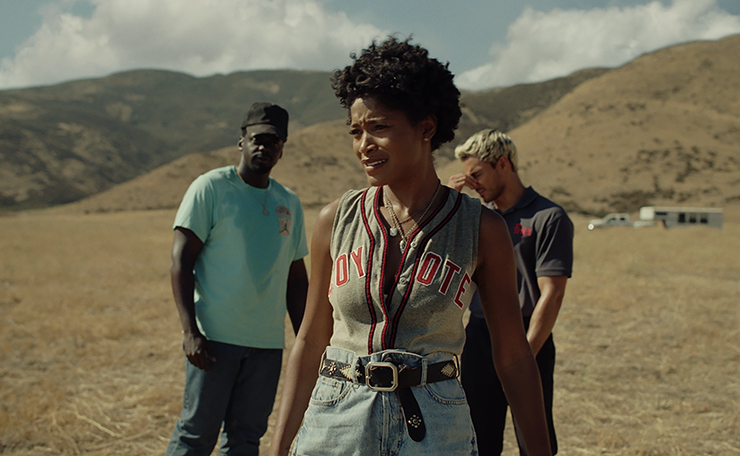
Daniel Kaluuya, Keke Palmer and Brandon Perea in a scene from "Nope." (Photo courtesy of Universal Pictures)
The aging rancher sits on his horse, slumped over, and the image bristles with over a century's worth of affinity for the possibilities of the moving image. “Nope,” the third feature from Jordan Peele, establishes the filmmaker's lofty goals from its opening scene with clarity and confidence. The “Get Out” director never loses his poise in this enigmatic tale of an otherworldly threat peopled by go-getters and has-beens on Hollywood's margins. The clarity, however, eventually slips right through his fingers.
It's a shame, because for at least the first hour, this atmospheric thriller with the laconic pace of a George Stevens Western juggles its myriad themes and metaphors quite skillfully. Peele abides by the dictum that for a layered genre venture like this to stay afloat, the key is location, location, location. In true Tinseltown fashion, Haywood's Hollywood Horses is advertised as a horse ranch run by the descendants of the unnamed Black jockey seen riding in what is known as the first strip of celluloid in motion. It serves as the arid, sprawling setting for an impeccably crafted meditation on show business, family ties and a spooky orb that zips and zags around and over the clouds.
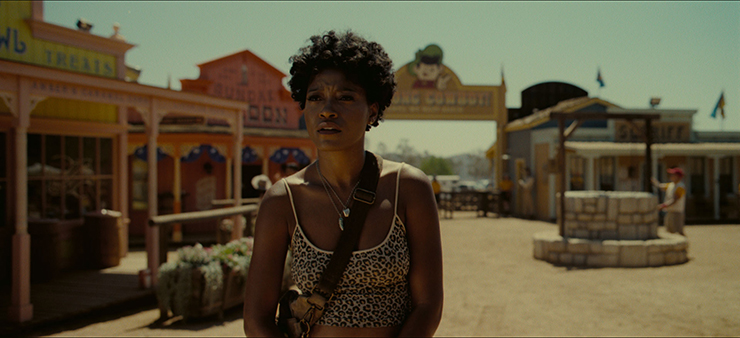
Keke Palmer in a scene from "Nope." (Photo courtesy of Universal Pictures)
The aforementioned rider is patriarch Otis Haywood Sr. (Keith David), who is talking to his son OJ (Daniel Kaluuya) moments before he is buffeted by debris that hits him like small projectiles. The character's posture recalls the ending of Stevens' “Shane,” which refuses to spell out the fate of Alan Ladd's stoic cowboy. Not so in “Nope.” Otis dies in the hospital, leaving his son with a grisly souvenir: a nickel that went through his father's eye.
OJ and his sister Emerald (Keke Palmer) don't realize it yet, but their father's death is the opening salvo of their interaction with a reclusive and deadly UFO. The siblings are a study in contrasts, OJ the sullen, monosyllabic yang to his sister's hyperactive yin. The bickering and resentments come bubbling to the surface when Emerald comes to visit in the family homestead, inside a house eerily reminiscent of the Benedict mansion in Stevens' “Giant.”
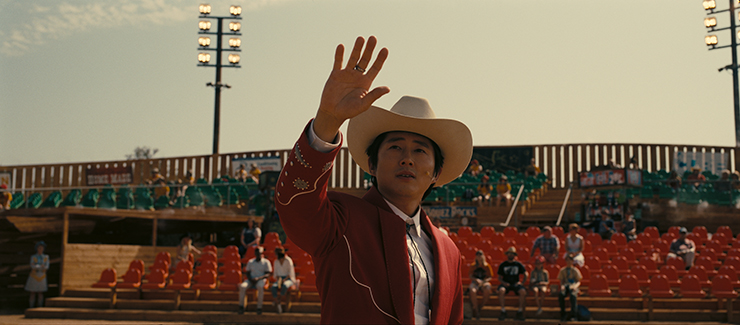
Steven Yeun in a scene from "Nope." (Photo courtesy of Universal Pictures)
Once the Haywoods come to grips with the fact that a flying saucer is targeting their horses, they take steps to document this airborne predator and attain the success and exposure that has largely remained out of their grasp. They are aided by Angel (Brandon Perea) an electronics store employee who sets up their state-of-the-art surveillance system. But OJ and Emerald want to recruit Antlers Holst (Michael Wincott), an iconoclastic cinematographer who gives off unmistakable Alejandro González Iñárritu vibes, with the inflated ego to match. Like the mysterious entity they are pursuing from a safe distance, Holst remains noncommittal.
Throwing a wrench into the siblings' plan is Jupiter's Claim, an Old West-flavored theme park run by former child star Ricky “Jupe” Park (Steven Yeun), with its own link to the unpredictable extraterrestrial.
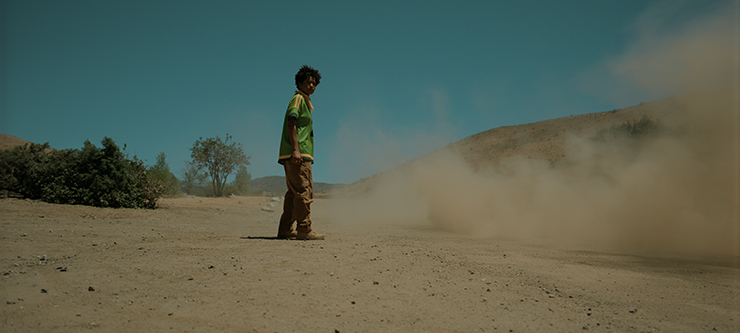
Keke Palmer in a scene from "Nope." (Photo courtesy of Universal Pictures)
Peele, aided by ace cinematographer Hoyte van Hoytema (“Interstellar”) and the hyperclarity of the IMAX cameras they used, maps out “Nope's” physical and thematic territory with meticulous flair, at least during roughly the film's arresting first hour. The way Peele uses camera placement and composition to glean tension or establish a specific mood remains his standout asset. This critic also appreciates how he eschews the frenetic rhythms of the majority of current studio output. He is in no hurry to peel back the onion layers of his central mystery.
But just when “Nope” bares its fangs, the film goes limp. What is supposed to be terrifying comes across as chintzy. In addition to paying homage to the Western, Peele is clearly emulating the methodical craft of Steven Spielberg. “Nope” has been widely dubbed Peele's “Jaws” in UFO B-movie drag. But “Nope” ends up hewing closer to the jigsaw-puzzle fastidiousness of M. Night Shyamalan. To his credit, the additional layer of class warfare and racial divide that sets his work apart is interwoven more effectively than in “Us,” Peele's sophomore effort. Like “Nope,” “Us” started strong before gracefully going downhill.
While “Nope” has a sturdier structure than the narrative muddle that marred “Us,” it's eventually let down by an antagonistic force of destruction that elicits little dread. Peele opts for an unhappy medium that leaves most of the bloodletting implied but shows just enough that you learn just how this being operates and attacks. But as Peele begins to dole out answers, “Nope” grows less and less engaging. The setup is so strong that it's disheartening to see a director this talented once again paint himself into a corner.
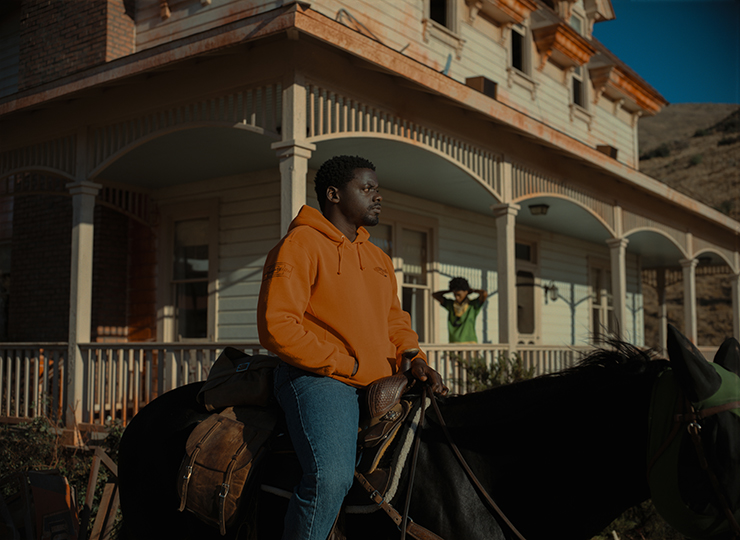
Daniel Kaluuya and Keke Palmer in a scene from "Nope." (Photo courtesy of Universal Pictures)
It also doesn't help matters that the film keeps reverting to flashbacks that show a violent incident involving a chimp with whom Jupe co-starred in a 1990s sitcom. The disturbing scenes allow Peele to strike a very on-the-nose parallel between a suddenly homicidal primate and the present-day UFO. The problem is that the flashback scenes end up being more compelling than what is supposed to be the main story.
The film ultimately spends what feels like an eternity in a climactic and rather confusing confrontation that feels elaborate but fails to ratchet up the tension. Imagine the shark hunt at the end of “Jaws,” re-envisioned as something closer to the crop duster sequence in “North by Northwest.” It may sound good on paper, but the end result left me cold. It reduces what ought to be the terrifying possibilities this entity is capable of to a problem to be solved.
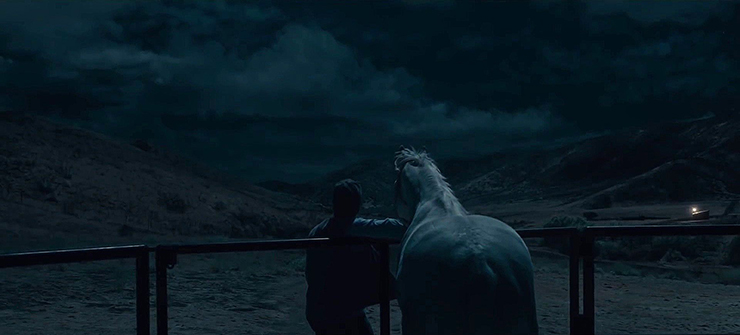
Daniel Kaluuya in a scene from "Nope." (Photo courtesy of Universal Pictures)
But give credit to Peele to continuing to take big swings. Even as “Nope” gets away from him in the end, Peele remains an intriguing filmmaker who's curious enough about the medium to make something capable of changing the game. With the evocative but frustrating “Nope,” he shows how far he's come and how far he's got left to go.
Jordan Peele's “Nope” is now showing in wide release, including IMAX engagements at Regal South Beach, AMC Aventura, AMC Sunset Place and CMX Dolphin.




